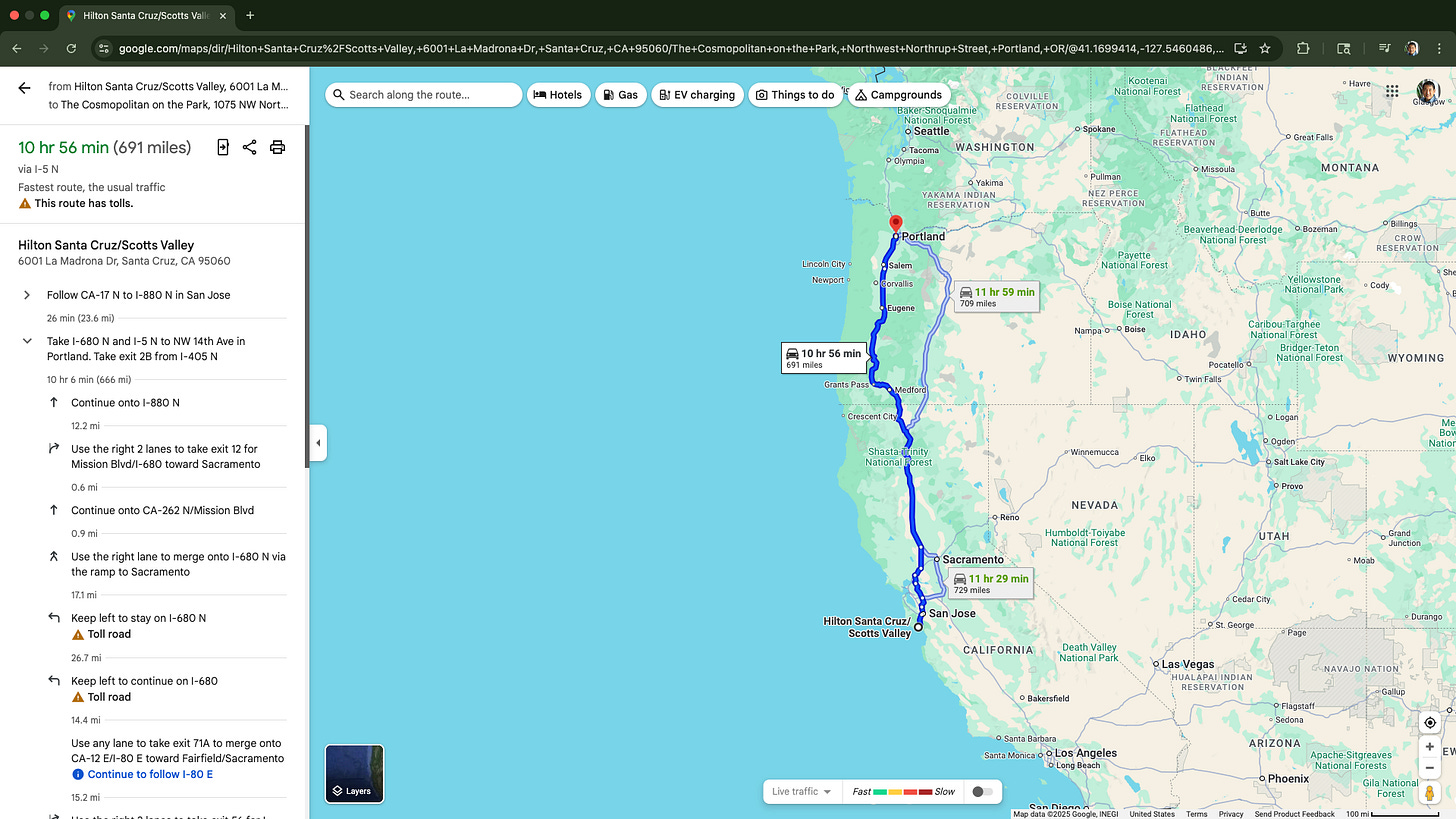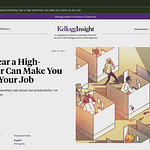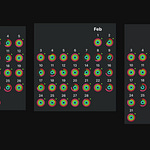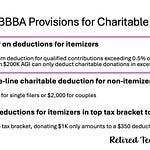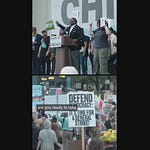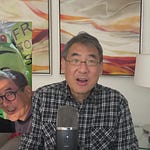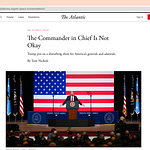Today’s post is a day late. After 11 hours in the car yesterday, I wasn’t in the mood to write or record.
But now, with some distance, I want to share reflections from my road trip back to the Bay Area—a place I called home for 21 years across two different chapters of my life.
Why the Bay Area Still Amazes Me
I burned out twice in the Bay Area. Eleven years the first time, ten years the second. And yet, I have to admit: it’s still such a cool place.
The weather is consistently beautiful. It’s home to two elite technology universities: Stanford and UC Berkeley. Graduates actually want to stay. I remember when I graduated from MIT, many of my classmates came west to pursue graduate studies here and stayed!
The companies are world-class, attracting brilliant people from everywhere. I was lucky to land here after MIT, recruited by Oracle, then staying for Silicon Valley startups, then recruited back years later. During this trip, we reconnected with coworkers from both periods.
The medical research is exceptional too. Beyond Stanford, there’s UCSF, which is why we made this trip in the first place. I made my biannual visit to the UCSF Memory and Aging Center for an observational study.
Old Friends
Seeing old friends was the true highlight. It’s been nine years since we moved to the Pacific Northwest, so every friendship here is at least a decade old. The longest? Thirty-five years.
We had a reunion with people from my first job at Oracle, which I started in 1990. The group included one of my original interviewers and even a judge from our new hire training competition. (I won an Oracle watch in that contest!)
One of the funniest memories that came up: the “celebration” when we shipped Oracle Data Browser 1.0. Larry Ellison’s chief of staff threw us a little ice cream party in the Oracle Fitness Center. We thought it was incredibly lame. So we decided to throw ourselves a proper party at Dal Baffo, a very nice restaurant in Menlo Park, where we proceeded to absolutely abuse the expense account with expensive wines. It got so ridiculous that our boss actually left the dinner and closed the check to stop the tab from accumulating! We were all laughing about it decades later.
This Oracle get-together actually set the timing for the entire trip. One former team member was in town for Dreamforce, Salesforce’s big conference. Another who lives in Boston decided to vacation here that same week. Others drove in from Santa Cruz, the coast, and the Peninsula. We spent hours reminiscing, catching up, and sharing thoughts about retirement and what’s next.
Looking back, it amazes me how Oracle was a launchpad for so many interesting, successful people.
One friend who couldn’t make it sent each of us a commemorative book about the House of Nanking, the Chinese restaurant we used to visit together. It was such a thoughtful gesture!
Beyond Oracle, I saw friends from Latitude, my second startup. Regular readers might recognize their names and faces from my Sedona trip. We used to run together every Sunday at 7am at Rancho San Antonio. Over the years, we’ve gotten together in Seattle, Portland, and Sedona too.
I also connected with friends from Barracuda Networks, my longest stint at a single company. Those friendships remain incredibly meaningful.
In one case, we connected with friends, and their adult daughter joined us, too. We all remembered when she was just a little kid. In another, we were connected with a couple earlier in life, along with their three-year-old son. That day, we actually skipped the #NoKings rally, something regular readers know I’m very passionate about. But I wanted to prioritize time with friends
What We Actually Talked About
Given our stage of life, common themes emerged: aging or deceased parents, what our kids are doing, adult sibling relationships, our own self-actualization journeys. I’m not sure if it’s our life phase, the length of these friendships, or broader societal trends, but I was deeply moved by how rich and personal our conversations have become.
What strikes me is how work became the foundation for decades-long relationships spanning multiple life phases. I don’t envy young people starting careers in fully remote environments. There’s something about being in the office late at night together, in the trenches. Those shared experiences formed the basis of truly lasting relationships.
Cognitive Testing at UCSF
The “main event” driving this trip was my biannual visit to UCSF. As I’ve mentioned before, my dad died with dementia. My mom’s brother is experiencing its effects now. I carry an APOE-4 gene, which increases my dementia risk.
So I signed up as a cognitively normal subject in a long-term observational study at UCSF. I’m one of about 500 participants. The program evaluates biomarkers through fasted blood draws and MRI brain scans, combined with cognitive testing. Right now, I’m wearing a Fitbit so they can associate physical activity with biomarkers and cognitive performance.
Some tests were basic. They are the same things Trump brags about scoring 30/30 on. They asked where I was, the date, the day of the week, to draw an analog clock set to a specific time, naming certain animals, and other simple tasks.
Others, while familiar, remained difficult. I’ve participated since 2019 and watched the testing evolve. One test involves hearing a list of about 15 words and reciting as many as I can remember. The challenge? Then hearing a second list and distinguishing which words were in the first list versus the second.
Other tests involved reciting sequences of digits (beyond seven got pretty hard for me), then reciting digit sequences in reverse.
I’m always worried that my brain function has been declining since my youth. I used to pride myself on an excellent memory. Now there are things I do that I don’t remember doing at all. Before this trip, I thought I needed to add our new car’s license plate to our Bay Area FasTrak account. When I logged in, I discovered I’d already done it back in August, with no trip planned. Despite that it seems like something I would do if I got new license plates, I have zero memory of doing that!
Some of these cognitive tests seem so difficult that I honestly don’t know how I would have performed even when I was younger. Is this normal aging, or something more? That uncertainty sits with me.
Some tests felt easier after previous exposure. One involves hearing a detailed story and repeating it with maximum accuracy. Another requires redrawing a complex line diagram.
The test where previous exposure helped most? Naming illustrated items. Through this testing, I learned two new words: trellis and yoke. Maybe it was growing up with immigrant parents, but before 2019, I couldn’t have named those items. I’ve had examiners (Asian and Latin American) admit they didn’t know those words before administering these tests either.
The most surprising were newer cognitive tests on iPad or PC. One required remembering faces paired with each person’s favorite vegetable or animal. Another involved tracing back a circle’s path across a matrix. It was easy for me to remember the last two positions. Remembering the last three, four, or five? Pretty hard to impossible.
All of this fascinates me. I hope the study yields meaningful insights. One friend we saw—a neuroscientist who told me about this study—mentioned promising research on GLP-1 receptor agonists like Ozempic and their potential role in preventing or delaying Alzheimer’s progression.
She also mentioned the shingles vaccine may help prevent Alzheimer’s onset. Marsha and I both plan to get vaccinated. We just got our COVID and flu shots, so shingles is next.
The Long Drive: 11 Hours and 40 MPG
This was our first Bay Area drive in our new car. Two years ago, we took a driving vacation in my 23-year-old Audi TT. This time, we wanted to test our new RAV-4 plug-in hybrid on a real road trip.
The decision to drive was partly practical. I had Zoom calls to work around. However, this was mainly about flexibility. With the government shutdown, we didn’t want potentially absent air traffic controllers or TSA agents to create uncertainty.
It’s about an 11-hour journey. We broke it into two days going south: four hours to Ashland, Oregon on day one, then seven hours the next day with a stop at the Shasta Cascade Welcome Center in Anderson, California. Coming home, we pushed through in one day with stops in Vacaville and Medford.
I loved the Dynamic Radar cruise control, set to keep us three car lengths behind the lead vehicle. The Lane Tracking Assist provided automatic steering to keep me centered. These features significantly reduced the strain of long-distance driving.
The gas mileage impressed me too. While we started with a full charge, we didn’t charge again on the road, relying entirely on hybrid mode. We got close to 40 MPG actual, with four fill-ups of typically nine gallons or less.
Having CarPlay on a large screen made a huge difference navigating. I think about how we used to clip an iPhone to a heat vent in my Audi TT, playing sound through a Bluetooth FM transmitter. We’ve come a long way.
Marsha asked if we saved money driving. If we paid ourselves for time, absolutely not. But comparing gas, lodging, parking, and food versus airport parking, plane tickets, and a rental car? We probably saved a bit. The tradeoff was 11 hours of transit each way versus about four hours for flying (including airport time). Of course, we’re retired so we have the time.
This was a completely different experience from why we originally bought the car: bopping around Portland on electric-only. The 42-mile electric range means we almost never use gas around town. It was fun experiencing our new car in a different context.
Finding a Home for Marsha’s Vinyl
There was another key motivation to drive. When I posted on Substack about potentially selling or donating Marsha’s old vinyl records, a friend down there volunteered to take them. He offered to pay for packaging and shipping, but we realized hand delivery made more sense. (Though to be honest, the vinyl idea came up after we’d already decided to drive.)
Giving these records a good home felt important as we continued cleaning out Marsha’s family home. Just like I wrote about Marsha’s stuffed animals in a previous post, these albums served a meaningful role in her life.
At our friend’s house, we played two records on his turntable. First, New Order’s “Blue Monday“ 12-inch (45 speed). My friend loved how the album cover looked like an old floppy disk. Then Information Society’s “What’s On Your Mind (Pure Energy)“ 12-inch (33 speed). I specifically chose this one because his other vinyl records were all albums, and I wanted to show him how these 12-inch singles could have multiple extended dance mix variations, something the “Blue Monday” single didn’t have.
It closed an interesting chapter.
Surprisingly Good Food
As Portlanders, we’ve sort of become food snobs. While Michelin-star quality exists in many cities, it often comes at a steep price. One reason we moved to Portland was all the cool little bars and restaurants.
Our best meal in the Bay Area? The South Indian food our very good friends cooked. My stomach feels satisfied just thinking about it. I’m only bummed that Ozempic means I can’t eat as much anymore.
Generally, I’m not a huge fan of eating out in most cities. Portland restaurants are just that good. But this trip surprised us.
In Ashland, check out Cocorico in the little downtown. In San Francisco, with a fasted blood draw the next morning, I needed to eat immediately. We stayed at a vacation rental in Potrero Hill and discovered Destapas, a wonderful Spanish neighborhood restaurant. Even the little Italian place our friends took us to in Santa Cruz, Tramonti, was quite good.
So while I wasn’t expecting much, there was genuinely good food.
Coming Full Circle
Overall, this was a really nice trip. So much felt familiar, yet everything looked different.
Marsha asked if I miss the Bay Area. I miss the people, but I also recognized that when we lived there, we didn’t see the same people constantly anyway. Our visit actually brought them together. Everyone across various phases of my life was also living in a different “present” state.
This trip weaved together many threads: nice weather, old friends, my research visit, good food, experiencing our car in a new way, and closing the chapter on Marsha’s vinyl. It was, quite simply, an overall good time.



